The Darkest Visual Horror Experiences in Comics You Can't Ignore
Unveiling the Horrors: An Introduction to Visual Terror in Comics
Visual horror in comics is a uniquely unsettling experience, where unsettling imagery meets the boundless creativity of graphic storytelling. From the limited edition of The Comic Book Holocaust to House by Josh Simmons, creators have mastered the art of weaving narratives that twist the reader’s gut in disturbing yet captivating ways. Shintaro Kago, renowned for redefining body horror, uses “ero guro” to explore human discomfort, avoiding conventional themes of fear or pleasure. His unforgettable moments in Icons Vol 1 demonstrate his unparalleled skill. Indie comics invite readers to explore spine-chilling tales, with titles among the top 5 visual horror experiences, delivering shockwaves of terror.
The Art of Dread: How Illustrations Amplify Fear in Graphic Narratives
The marriage of visual storytelling and horror in comics creates some of the most visceral emotional responses, as seen in classics like House by Josh Simmons and the Comic Book Holocaust 500 copies limited edition. Illustrators utilize unsettling imagery through stark contrasts, distorted anatomy, and surreal environments to evoke dread. Shintaro Kago, renowned for redefining body horror, wields his ero guro style to transform grotesque illustrations into psychological triggers. Works like Icons Vol. 1 or Kago’s most unforgettable body horror moments demonstrate the balance between detailed line work and chaotic concepts. Masterfully crafted panels from top horror indie comics today manipulate space and pacing, making even the static page evoke relentless anxiety. Whether it’s the spine-chilling design of Simmons’ haunted realms or Kago’s surreal dissections, these top visual horror experiences in modern comics reveal illustration as a tool of relentless, twisting terror. These are among the most disturbing comics that’ll twist your gut.
Monstrous Masterpieces: Iconic Horror Comics That Redefine Scares
Horror comics have consistently employed unsettling imagery to linger in readers’ minds, pushing boundaries with works like Icons Vol. 1’s “Top 5 Most Disturbing Pages,” which earned its place through its unnerving art and narratives. Shintaro Kago’s unforgettable explorations of body horror, as seen in his signature ero guro genre, showcase grotesque transformations that surpass the limits of both pleasure and fear. Josh Simmons’ House crafts psychological dread with minimalist panels, while the raw, taboo-breaking visuals of The Comic Book Holocaust (limited to just 500 copies) remain notorious. These titles redefine modern horror, making them must-reads for fans of true visual terror.
Psychological Darkness: Themes That Linger Beyond the Pages
Psychological darkness in horror comics transcends mere visual terror, embedding itself deeply into the reader’s psyche. Works like Icons Vol. 1 feature Shintaro Kago’s most unforgettable body horror moments, showcasing a twisted exploration of human vulnerability. His use of ero guro themes isn’t about pleasure or fear; rather, Kago redefines body horror, fostering a sense of unease through deconstructed human anatomy and surreal narratives. In comparison, House by Josh Simmons offers dread through the suffocating silence of its empty spaces, gnawing at the mind. Indie titles like The Comic Book Holocaust (500 copies limited edition) push boundaries, cementing their place among the top 5 visual horror experiences in modern comics today.
Innovative Techniques in Horror Art: What Makes Visuals Spine-Chilling?
Horror comics like Icons Vol. 1 and House by Josh Simmons employ artistic elements that evoke visceral reactions from readers. The top 5 most disturbing pages in modern comics often hinge on Shintaro Kago’s unique approach to body horror, where grotesque imagery twists human anatomy in surreal and unsettling ways. Kago, known for redefining body horror, merges the “ero-guro” aesthetic with fine surrealism, provoking discomfort without relying on explicit fear or pleasure.
Artists strategically use disjointed panels, distorted proportions, and exaggerated expressions to heighten tension. Playing with shadows and obscure angles, as seen in The Comic Book Holocaust’s limited edition pages, creates an oppressive atmosphere. These techniques compel readers to confront their unease and amplify the psychological impact of horror in indie comics.
Enduring Nightmares: The Legacy and Impact of Horror Comics
Horror comics have long been a breeding ground for some of the most striking visual and narrative experiments. Titles like Icons Vol. 1 earned their acclaim for delivering the top 5 most disturbing pages in modern comics, while artists like Shintaro Kago redefined body horror with unforgettable works combining surreal aesthetics and grotesque storytelling. Through projects such as House by Josh Simmons, the genre pushed psychological boundaries, offering readers claustrophobic terror rather than traditional scares.
The limited edition The Comic Book Holocaust demonstrated how raw, independent comics carried horror into artistic extremes. These works, nestled alongside indie gems like Ero Guro by Kago, invite exploration of spine-chilling, visceral storytelling.

